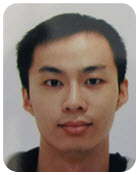Tennis Elbow (1)

Mr. Wang is a nine to five salary man whose main recreational activity is playing an energetic game of badminton with his colleagues after work. One day, the morning after a hard fought game, he felt pain from the outside of his right elbow to his forearm, had an ache in his forearm and had no strength in it to the extent that even lifting up a water bottle was hard. He thought to himself that the cause must have been playing too hard the night before and that the problem would clear up in a few days.
However, after three days his elbow problem hadn’t improved much at all and he went to hospital. After examination by a doctor and a physiotherapist, he was diagnosed as having “tennis elbow”….
What is tennis elbow
The medical term for tennis elbow is lateral epicondylitis. The main cause is that the connecting point between the muscle tendons and bone at the beginning of the forearm muscles (the elbow) are damaged by repeated tearing due to improper exertion of force or overuse, causing inflammation

The place where an attack of tennis elbow is experienced: the connecting point between elbow tendons and bone
Tennis elbow was given his nickname because it is commonly suffered by tennis players. However, anyone who often lifts or pulls heavy objects or uses their wrists to twist with a lot of effort is susceptible to tennis elbow, such as players of badminton and golf; even holding a wok when cooking or squeezing a towel dry can bring on an attack. Tennis and badminton professionals have a 10-50% chance of suffering tennis elbow in their career, while around 3% of the general population have suffered tennis elbow; the age of onset is 35-50 years of age and men and the proportions of men and women who suffer are the same.
Incorrect backhand action the main cause of tennis elbow
Backhands are a frequently played shot in badminton, and incorrect backhand shot action is the main cause of tennis elbow.
When we hit the shuttlecock when playing a backhand shot we first do a backswing; and then we use centrifugal force when we swing the racket, hitting the shuttlecock at the instant our arm is straight (as shown in the figure below).
When the racket face and the shuttlecock head come into contact a large impact is created and this impact is transferred through the racket to the wrist and forearm of the arm in which the racket is held. If the elbow is in a straight and rigid state at this time it will not be able to absorb the impact and minute tears will be caused inside the elbow. If the elbow is repeatedly put under strain the muscles will become fatigued, have insufficient muscle power and will eventually become inflamed. This is the classic way tennis elbow occurs.
However, don’t think that anyone who plays backhand shots will get tennis elbow. If a backhand shot is played correctly, when shuttlecock is hit the player will turn their body and dissipate the impact by moving the center of gravity.
Also, professional players try their best to hit the shuttlecock in front of their body, a key point often ignored by recreational players ;when the shuttlecock is hit when level with the body or behind the damage caused to the elbow is much more than if it is hit in front of the body.
 |
 |
|
Tennis elbow can be easily caused if the method of the application of force is incorrect when playing a backhand shot |
|
Symptons of tennis elbow
The pain suffered in an attack of tennis elbow usually comes on gradually. To begin with, pain will be felt on the outside of the elbow;if the inflammation is serious the pain will spread to the forearm;there will be a clear sore point on the outside of the elbow that, when pressed, will cause sharp pain. The pain will worsen if the sufferer tries to bend their wrist to the largest angle with elbow straight.
As well as pain, another problem sufferers face is weakening of grip power and they may even have difficulty picking up ordinary household items.
How to treat an attack of tennis elbow
If the correct treatment s received when an attack of tennis elbow is initially suffered there is a 90% recovery rate. In the acute stage (the third days of the attack) the most important thing is to rest properly. It is essential to reduce elbow use frequency, not to exert too much force and also to use an ice pack to ease the pain
Steps to applying an ice pack
- Put water and ice cubes (equal proportions) in a plastic bag to make a simple ice pack
- Apply the ice pack to the sore area for 15-20 minutes each time
-
After removing the ice pack, let the affected area rest for 3-4 hours then apply another ice pack.
If the ice pack is too cold or if pain is felt that indicates minor frostbite, remove the ice pack immediately and add a greater proportion of water to the ice pack or wrap the ice pack in a towel before continuing to apply the ice pack.
Remember! Never apply a hot pack or rinse the affected are with hot water in the acute stage or the inflammation will become worse. If the pain in the acute stage affects the sufferer’s sleep, we suggest that the advice of a doctor or physiotherapist is sought. Only with the approval of a doctor should related drugs or partial steroid injections be used to ease the pain.
After the acute stage ends (the redness, swelling and pain are no longer evident,) a hot pack can be used to accelerate blood flood and promote the healing of the damaged tissue. If the correct action is taken when an attack of tennis elbow is suffered then it can be effectively controlled within two weeks.
 |
|
||||||||||||||||||||||||||
|
Writter: Hsu Chih-Chung |
|||||||||||||||||||||||||||









